Solo exhibition, CAPC, Bordeaux 2019
Curated by Alice Motard assisted by Alice Cavender and Émeline Vincent
It Rains, It Rains, borrows its title from the folk song ‘Il pleut, il pleut, bergère’ written by the French revolutionary poet, actor and politician Fabre d’Églantine, who is said to have calmly recited the lyrics before his execution in 1794.
The exhibition comprised the installation Back to the Fields, first shown in 2015 and entirely reconfigured for the CAPC’s nave, as well as a series of objects connected to the French Republican calendar.
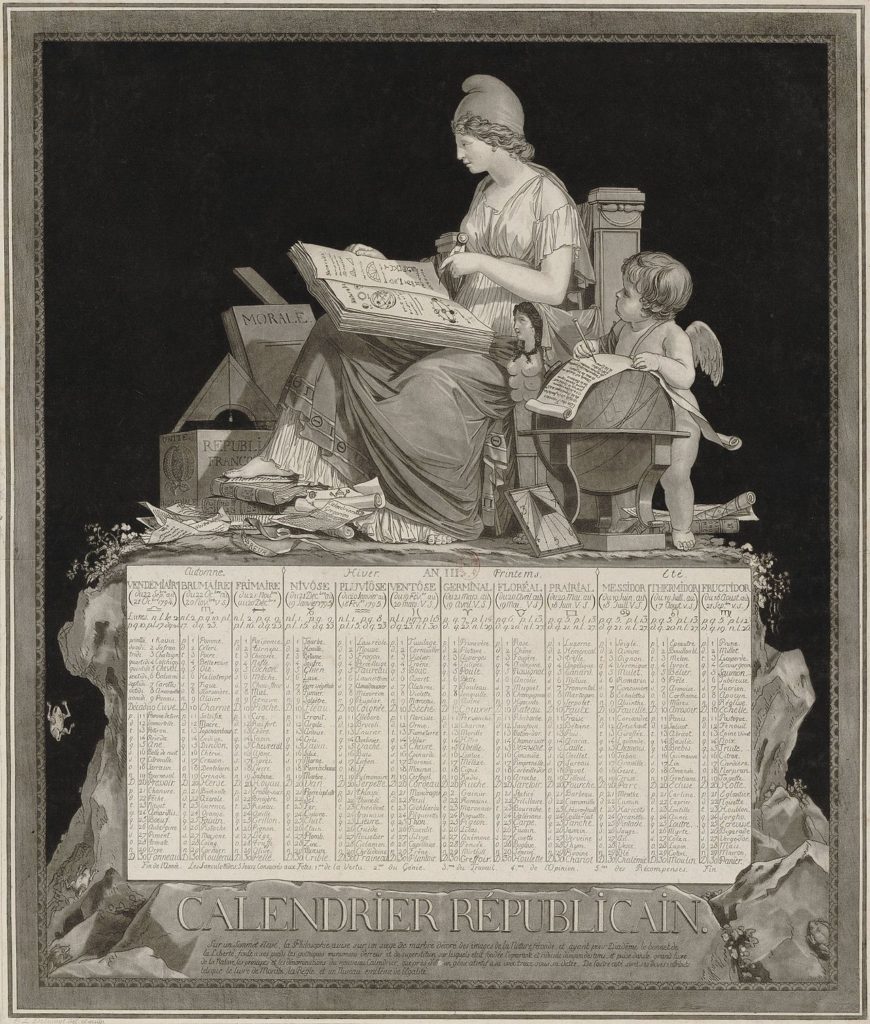
gallica.bnf.fr
The Republican calendar was adopted by the Convention in 1793, in the aftermath of the French Revolution, to replace the Gregorian calendar. Embodying and carrying the Republican ideals directly into the life of every citizen, it was in use for twelve years. It completed the dismantling of the Ancien Régime by reorganising time itself.
According to the idea that with the advent of the Revolution,‘time opens a new book to history’, the weeks and months of the year were restructured by a parliamentary commission comprised of artists, poets, scientists and horticulturists, among whom D’Églantine and the mathematician Gilbert Romme. The days of the week and the seasons were renamed in order to evoke nature and agricultural life, and the names of the months each referred to one aspect of French climate (e.g. Brumaire, from the French word for ‘mist’, or Pluviôse, for ‘rain’) or an important moment in peasant life (e.g. Vendémiaire, referring to the grape harvest, or Germinal, for ‘germination’). Replacing the Saints of the traditional calendar, each day was furthermore named after an agricultural product, a plant, a mineral, an animal or a tool.
Back to the Fields, 2019
The installation Back to the Fields reactivates the rural calendar as a three-dimensional, life-size work. It takes the shape of a tangible calendar composed of the 360 objects representing the Republican year: lettuce, cart, wax, turnip, honey, fir, ivy, figs, mercury, lava, moss, pheasant etc.
The Republican calendar comprises twelve months of thirty days. Each month is divided into three weeks, each week comprising ten days. The Sunday rest day of the Ancien Régime is replaced by a day off every ten days (which might explain the ultimate failure of the calendar). The remaining five days of the year (six in leap years) are called the sans-culottides, or ‘complementary days’.
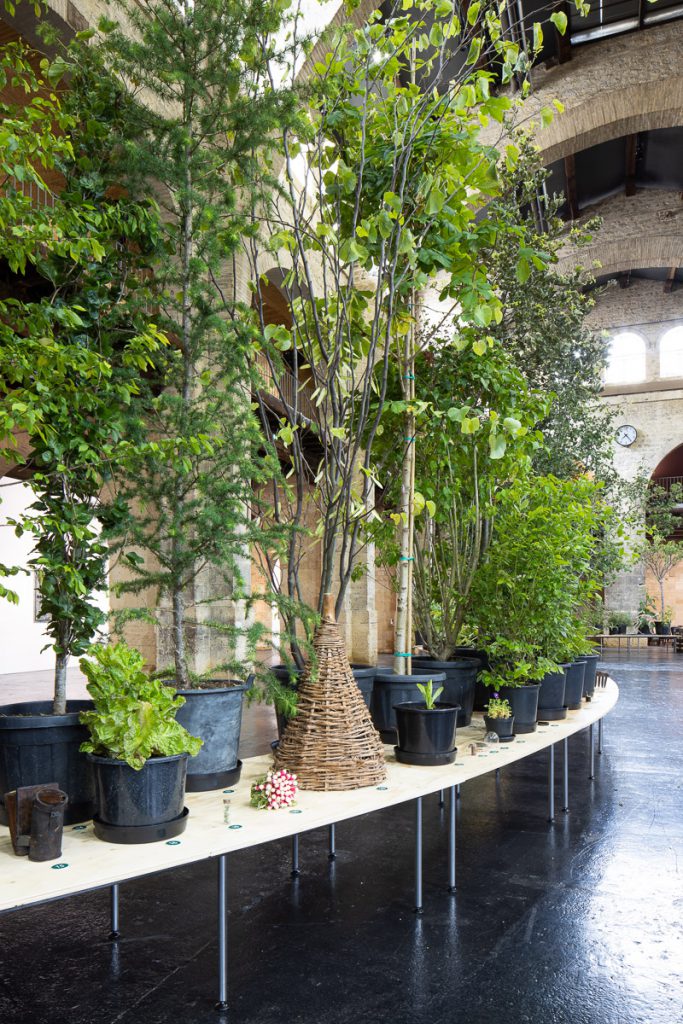

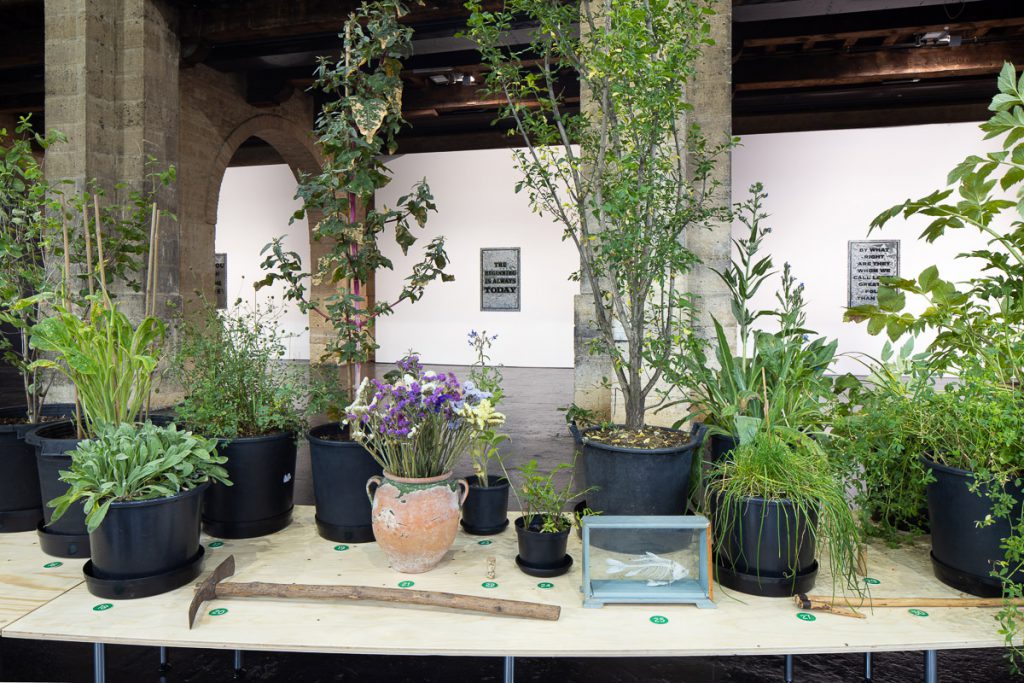
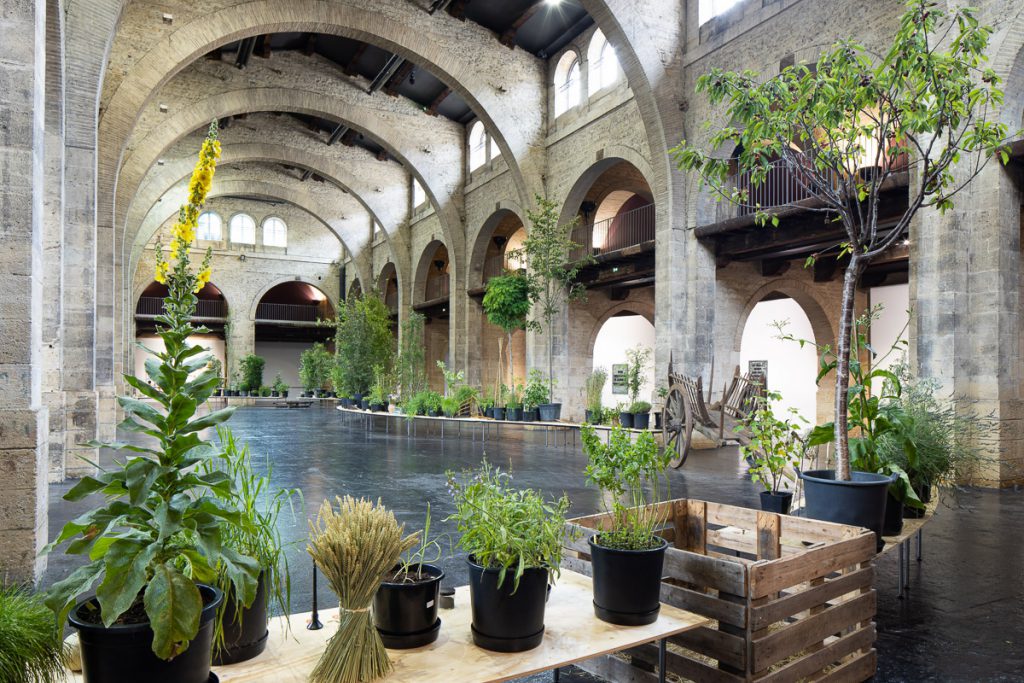

The sans-culottides
The sans-culottides – named after the sans-culottes, the radicals of the revolutionary period between 1792 and 1794 – relate to ideas or qualities: Virtue, Talent, Labour, Conviction, Honour, Revolution. To represent them, Ewan presents six works that emphasise their cyclical nature, whether by referring to the seasonal patterns of nature, agricultural rhythms, the phenomenon of reflection, the measurement of time or the menstrual cycle of the female body.
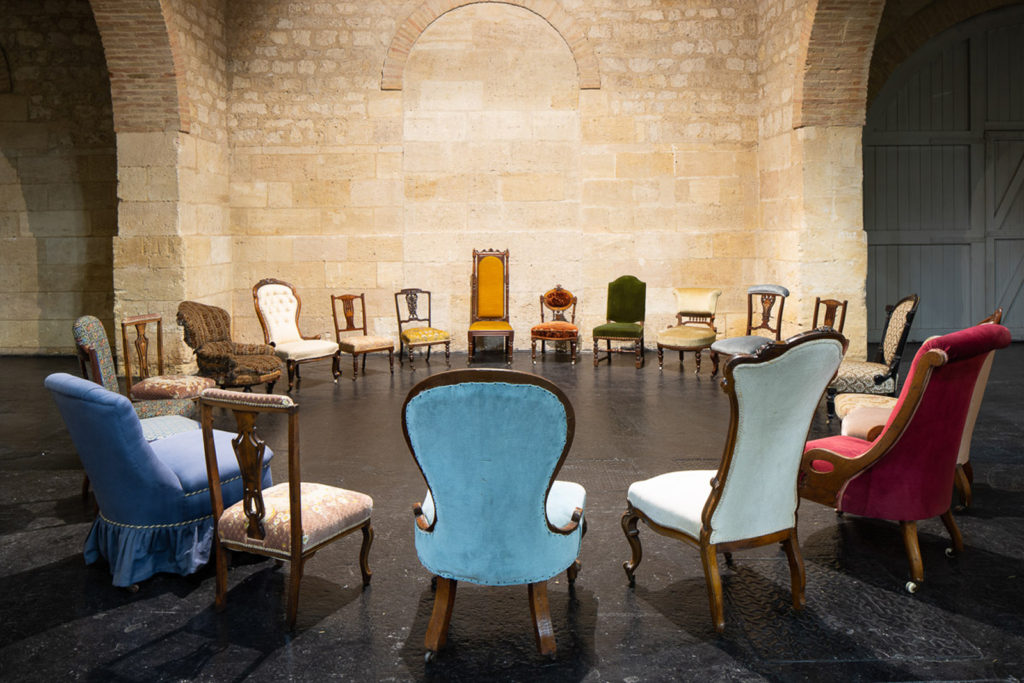
Virtue
Mothers’ Meeting (We Are the Ones Who Make Up for the Losses at War)
These were the words written on the banners held up by pregnant women who followed the processions accompanying the plantation of liberty trees in post-revolutionary France. The country, then at war with Austria, was seized by patriotic fervour and keen to defend the achievements of the Revolution. This is when the tree, an ancestral symbol of fertility, also became a strong image for the revolutionary ideal.
Mothers’ Meeting is a collection of nursing chairs from different periods, on which visitors are invited to sit. Nursing chairs are one of the only pieces of domestic furniture to have been designed specifically to fit the proportions and function of the female body. They were used for breastfeeding, their low seating encouraging interaction with children. This type of chair was mainly found in upper-class homes, which typically employed wet nurses to feed their babies, a common practice up until the 20th century.
The title of this work refers to the largely invisible history of women in the Revolution and to the unacknowledged emotional and physical labour of mothers, which the artist associates with the notion of Virtue. The chairs are arranged in a circle, subverting their original purpose and encouraging women to congregate, speak and be publicly visible.
Talent
Female Sword Swallowers Moon Calendar by MisSa Blue
The idea of Talent is embodied by a collection of swords created by the female sword swallower MisSa Blue, one of the leading figures of the contemporary Sideshow and Neo-Burlesque scene.
After a life threatening accident during one of her performances, MisSa Blue designed and commissioned a complete set of swords to be used on different days of her menstrual cycle. (The oesophagus and the uterus swell on the first day of menstruation, which is what caused the injury.)
The set includes 28 swords of different lengths that follow the lunar calendar. Two swords appear only once in the set: a bladeless sword resembling the new moon, and the longest sword, which corresponds to the full moon. The longest sword is to be swallowed on ovulation day when the female body is blooming and no sword should be swallowed on the first day of menstruation as it is the most dangerous day for a female sword swallower to get hurt.
This piece was originally commissioned to tour with the show Dr Carnesky’s Incredible Bleeding Woman in the UK.
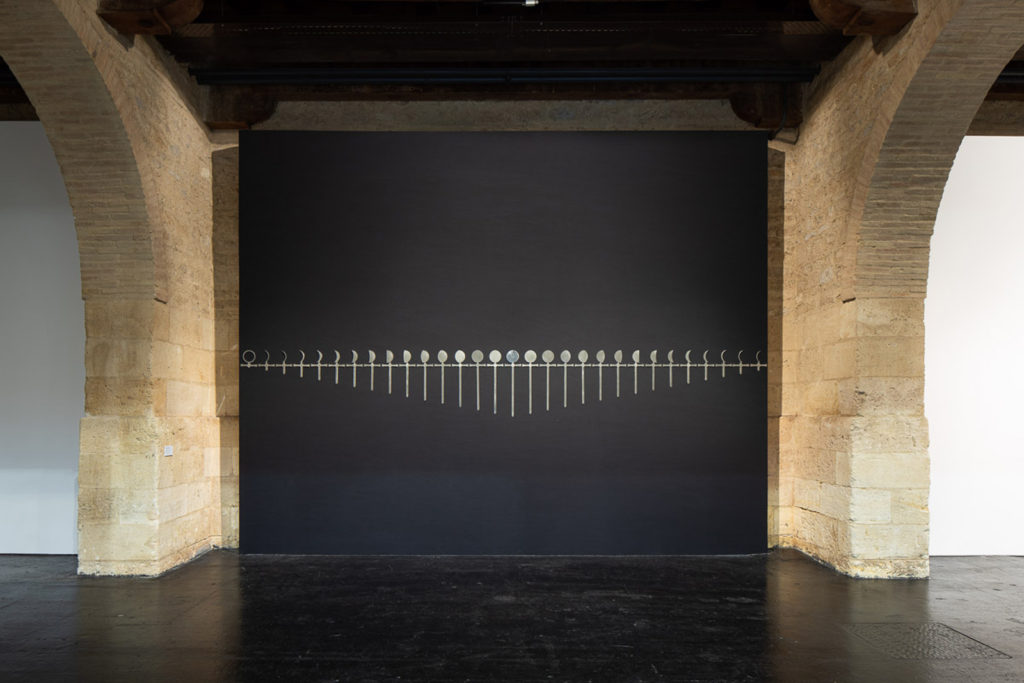
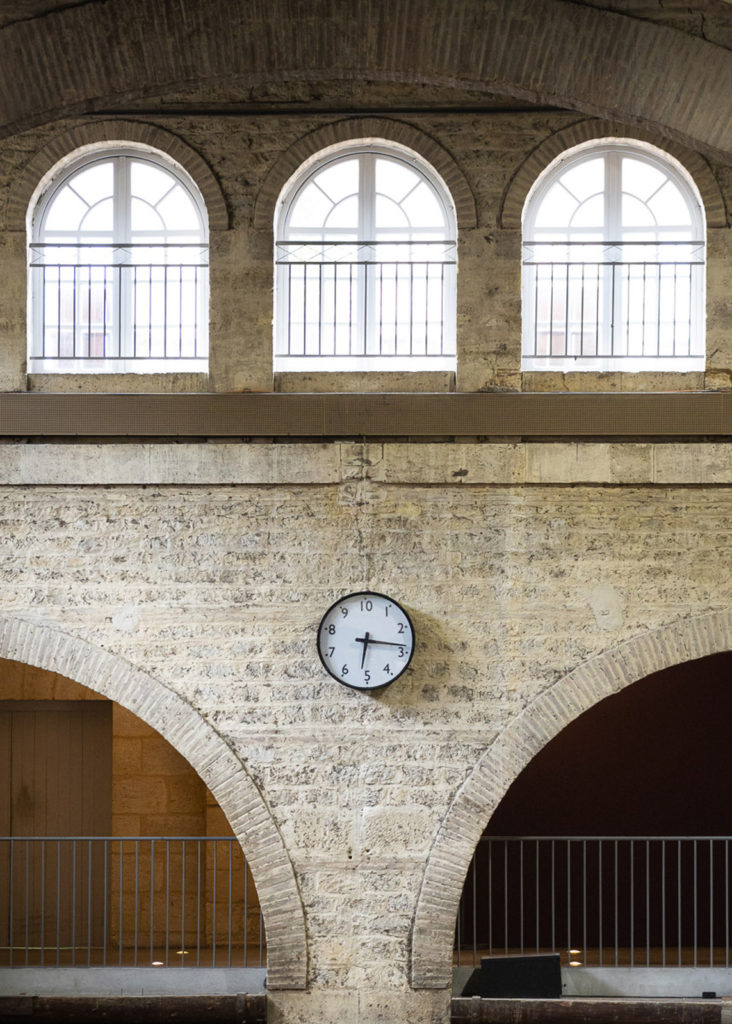
Labour
We Could Have Been Anything That We Wanted to Be
Decimal analogue clock, 2011
The concept of Labour is materialised by a decimal clock whose dial displays ten instead of twelve hours. The decimal regulation echoes the historic attempt to redefine and rationalise the day. Concurrent to the Republican calendar, France introduced a new system of time measurement liberated from the monarchy and Christianity, and temporarily lived to the rhythm of the decimal second. In decimal time, the day is divided into ten periods rather than twenty-four. Midnight becomes ten o’clock, midday becomes five o’clock, each new hour contains one hundred minutes, and each new minute contains one hundred seconds.
Ewan’s decimal clock recalls the historic function of the building that houses the CAPC, a colonial warehouse built in 1824 and used for over a century to store coffee, vanilla, sugar, cocoa, cotton, indigo, rum, wine, cereals, cod, dried fruits, spices etc. An archival photograph from the 1950s shows a clock overlooking the nave, defining the workers’ day. Ewan’s decimal clock replaces the one seen in the picture.
Conviction
Mirrors for Princes
Painted and glue-chipped mirrors, 2019
Mirrors for Princes is a series of pub style mirrors created with Artisan Artworks, a traditional sign writer based near Glasgow. The mirrors feature texts channeling the ancient call for social equality and justice. The words are derived from sources including the 18th century feminist philosopher Mary Wollstonecraft, the 14th century radical itinerant priest John Ball and the 19th century French anarcho-feminist Louise Michel (1830–1905), a major figure of the Paris Commune, who ran a libertarian school in London at the end of a turbulent life as an activist. Her struggles resonate with many issues raised in Ewan’s works: the question of teaching (Michel was a passionate teacher, filling her class with music, nature and animals), education and art for all, and more generally her commitment to a ‘social revolution’.
The English expression ‘mirrors for princes’ furthermore refers to a literary genre that outlines the basic principles of conduct for rulers as well as the structure and purpose of secular power.
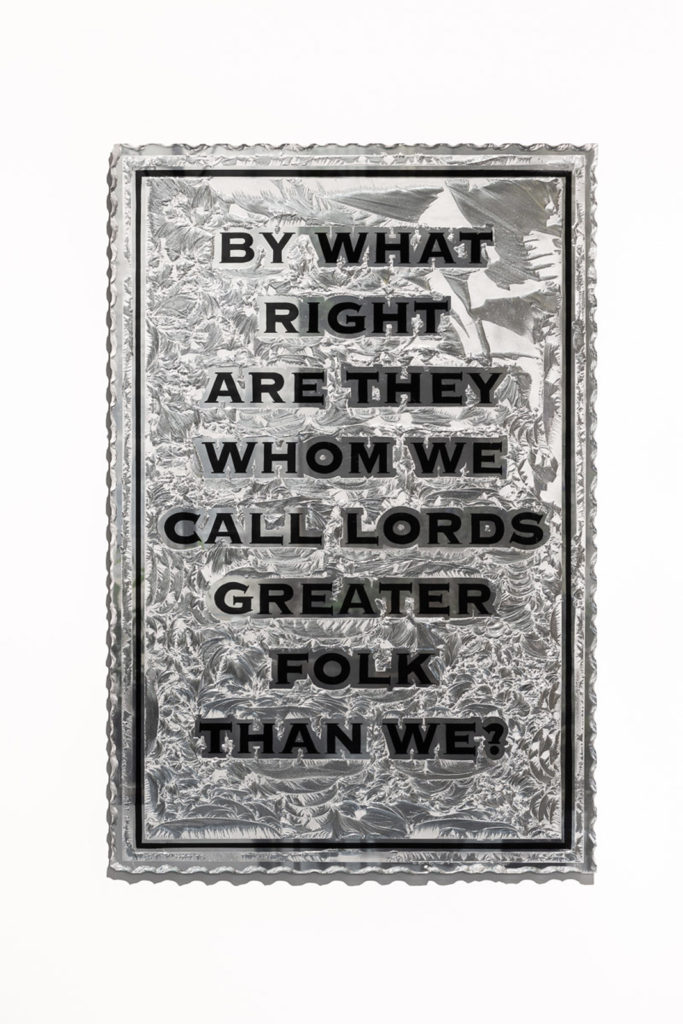
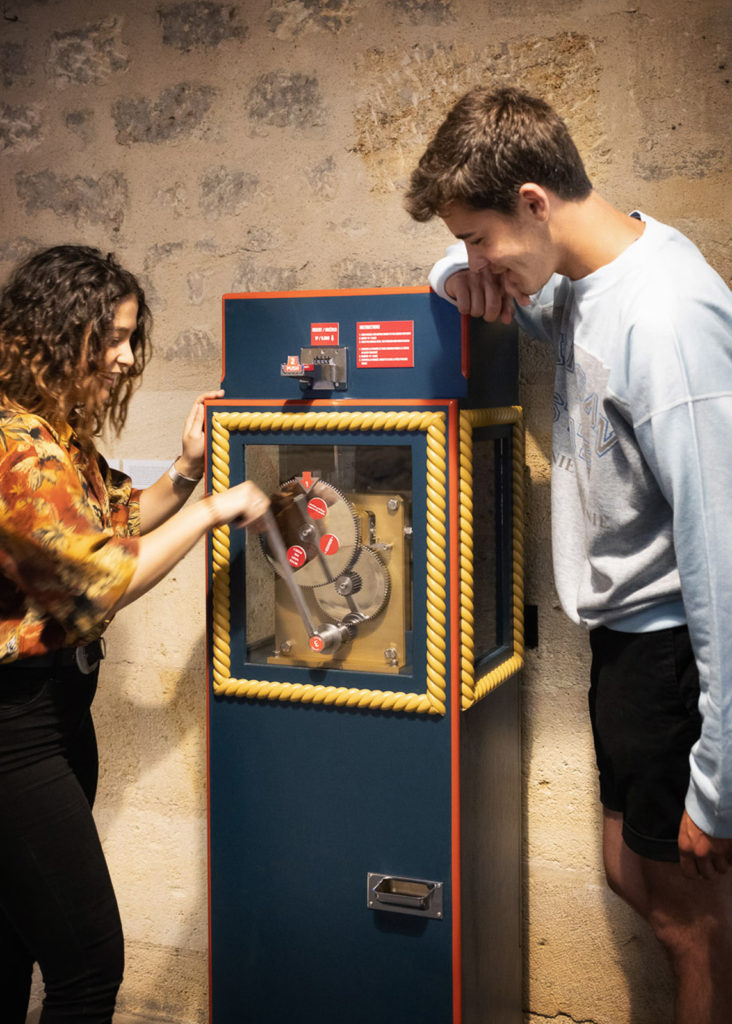
Honour
Bow Down to None
Painted wooden coin press, 2019
For the fifth sans-culottide, Ewan invites visitors to use a coin press that transforms coins into exonumia, a token of non-legal tender. Normally found in tourist destinations, the penny press flattens and stretches coins, transforming their intended form and erasing the original image on the coin. Tokens are created referencing the history of money, particularly the ‘sling of grapeshot’ pay packet of the working classes, once exchanged for labour in the nave of CAPC. Ewan is interested in coinage as a form of monument and the press references the act of destroying this and repurposing the raw material into a token capable of transmitting a message and perhaps reentering into circulation.
The title Bow Down to None refers to Tom Anderson (1863–1947), a recurring figure in Ewan’s work. Anderson started a movement of Proletarian Schools in Glasgow in 1918 in the wake of the Socialist Sunday Schools. A free-thinker and union activist but also an accomplished musician and poet, for over thirty years he taught children the virtues of independence, the power to think for themselves and the meaning of socialist revolution. The title is based on his precepts, enjoining the students of these schools of socialist inspiration to be courteous to all but to submit to no one.
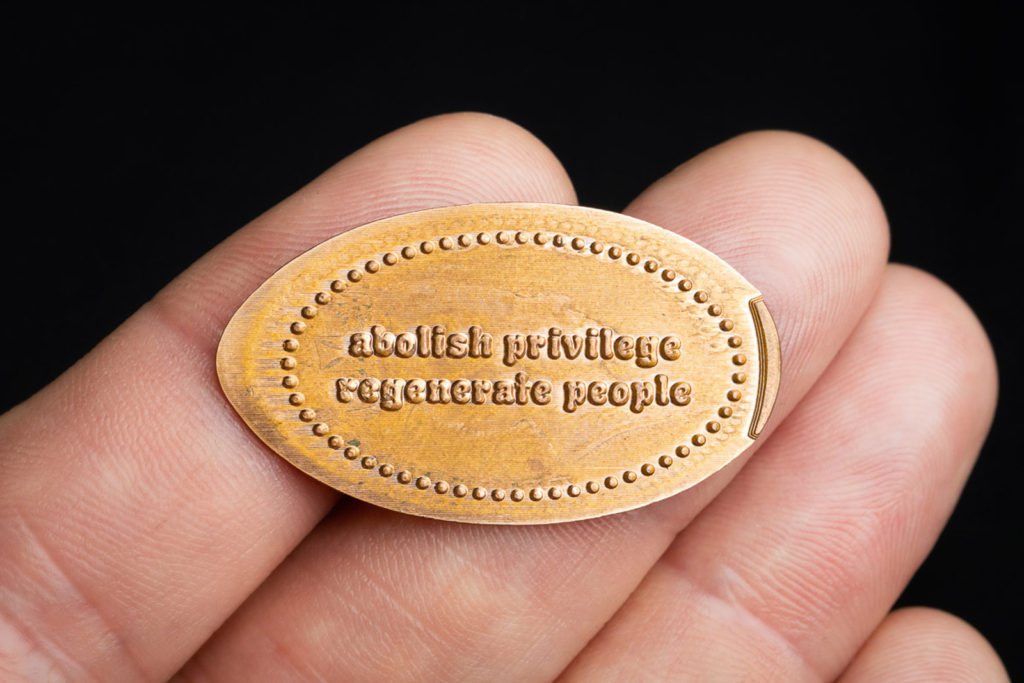
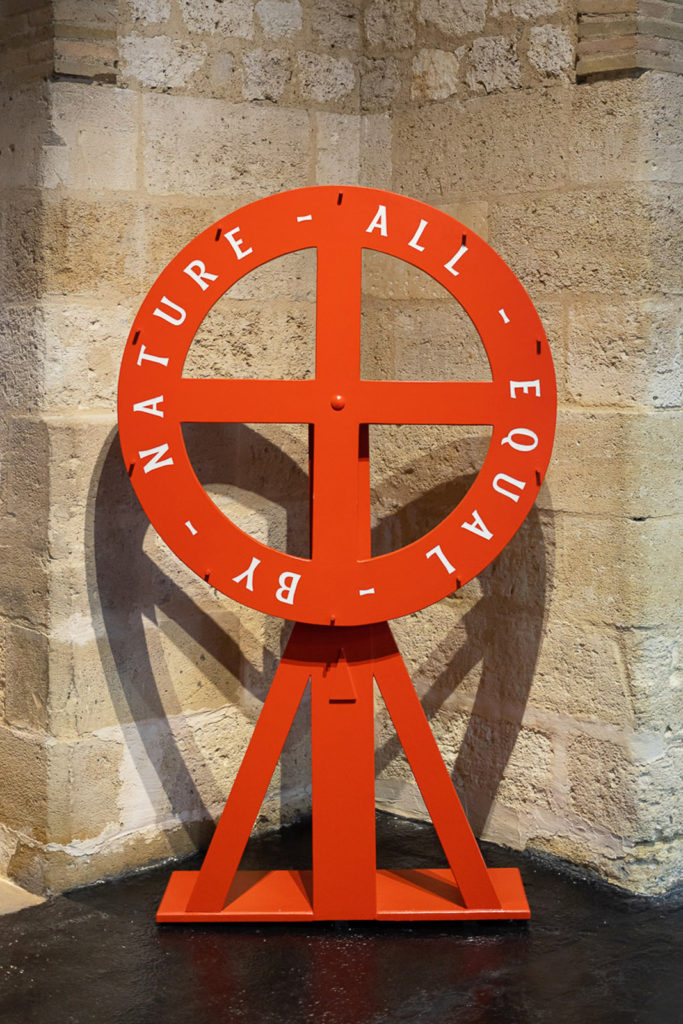
Revolution
Anti-Rota Fortunæ (No More Acceptance of Fate)
Painted wood with inlay, 2019
According to Silvia Federici, a scholar, teacher and activist who wrote about the transition from feudalism to capitalism (Caliban and the Witch: Women, the Body, and Primitive Accumulation), the image of the wheel of fortune appeared in medieval Europe during periods of social upheaval. A simple painted wooden construction, the ‘anti- wheel of fortune’ designed by Ewan to embody the 366th day of the year – the day of Revolution in leap years – celebrates the concept of equality so dear to the Republicans. It bears the inscription ALL EQUAL BY NATURE.